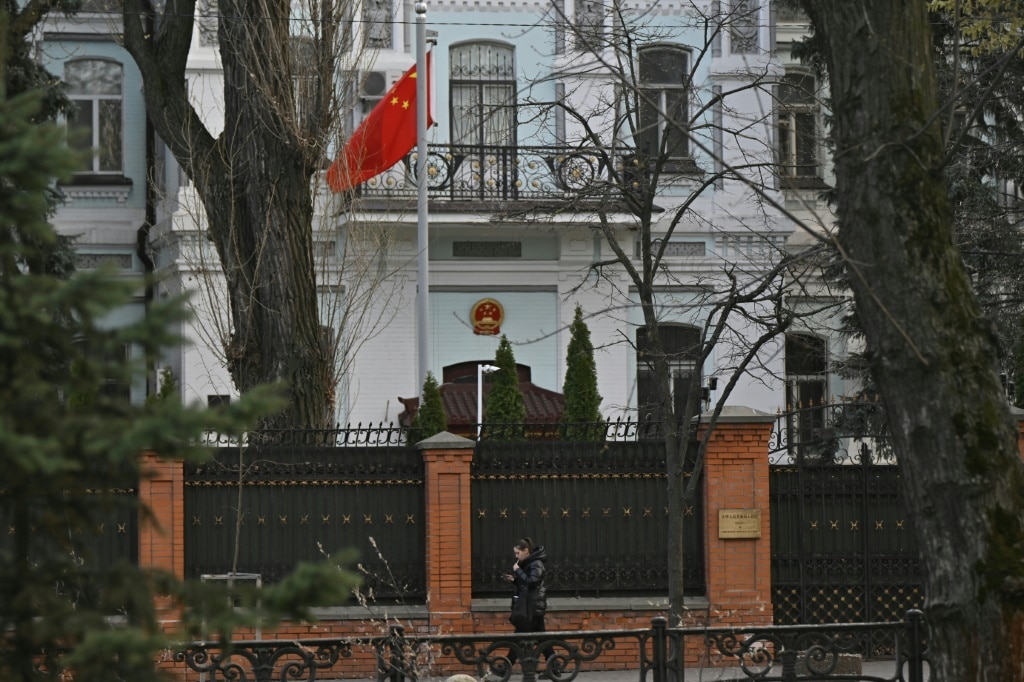How the Soviets lost their souls
Lost Souls by Sheila Fitzpatrick explores the fate of ‘displaced persons’ after the Second World War

Sheila Fitzpatrick is a leading scholar of Soviet social history. Her new book, The Lost Souls: Soviet Displaced Persons and the Birth of the Cold War, tells the story of Soviet citizens who were displaced across Europe during World War II. It is also the story of the attempt by the Allies to repatriate and later resettle millions of displaced persons (DPs).
The DPs included those from Ukraine, Byelorussia and Southern Russia, who had been taken by the German occupiers as forced labour; Jewish Holocaust survivors liberated from Nazi camps; and those whose countries and territories had been annexed in 1939-40, following the Molotov-Ribbentrop agreement; Western Ukrainians and Western Byelorussians, (formerly Polish citizens), residents of the annexed Bukovina, formerly Romania, and the Balts – Latvians, Lithuanians and Estonians – whose previously independent states were annexed by the USSR and who refused to recognise their imposed Soviet citizenship.

In 1945-46, the Allies’ military authorities divided Germany into four occupation zones – American, British, French and Soviet – and began to repatriate these DPs to the USSR. This mission was given to the new UN Relief and Rehabilitation Administration, the first international refugee organisation. Most Soviet DPs resisted repatriation, and apart from the early post-war forcible repatriation of more than 20,000 Cossacks to the USSR, the repatriation policy was replaced by one of resettlement.
The Soviet Union was desperate to reclaim the heterogenous mass of DPs, with ethnicities described as “nationalities” – Ukrainians, Byelorussians, Russians, Balts and Jews – and the Soviet authorities were infuriated by the DPs’ resistance, claiming them as their property but failing to persuade or coerce them to return. They accused the Allies of manipulating the DPs and “stealing” manpower for their capitalist gain.

The book’s title reflects the Soviets’ sense of ownership of DPs in the same way that Tsarist Russia referred to landowners’ serfs as units of property, or “souls” (dushi).
Fitzpatrick reminds us, despite a common assumption, that the majority of Soviet DPs were not Jewish, but Slavs and Balts. Alongside the Jewish survivors of Nazi camps and Slavs brought to Germany for forced labour, there were also those who had retreated with the German Army, including Nazi collaborators (e.g., Bandera’s branch of OUN) and those who fought under German command, including Vlasov’s Russian Liberation Army and the Baltic (i.e., Latvian) and Ukrainian (Galician) Waffen-SS. The “stateless” pre-war Russian emigres and POWs, initially ineligible, were also added to the DP category.
Fitzpatrick relates a range of personal stories of individuals who lived in DP camps (originally named “assembly centres”) while waiting for relocation, including the minority who planned to eventually go back to the USSR. The stories were unearthed from Australian and Russian/Soviet archives, Soviet interviews with repatriates and DPs’ memoirs, and include the experience of Fitzpatrick’s late husband, Michael (Misha) Danos, a former Latvian-born DP.
Without elaborating on individuals’ wartime experiences and circumstances of survival, Fitzpatrick focuses on life in DP camps across Germany and Austria; her style is lively and engaging, with occasional underlying humorous turns of phrase.
The reader learns that DPs’ accommodation ranged from the Bergen-Belsen concentration camp barracks to army caserns to ordinary dwellings, and DPs were free to move in and out, after initial attempts to contain them behind barbed wire. Fitzpatrick points out that these DPs “score well on any comparative scale of displacement”: their rations were higher than those of German civilians, and medical attention and childcare were provided. They also benefited from unprecedented agency: this manifested in leadership and self-governing of their “nationalities”-based communities.
DPs had a striking freedom of choice in selecting occupations, taking the opportunity to study, generating cultural, sporting and religious activities, engaging in relationships and even travel – as well as choosing not to be involved in any of it. Jewish survivors tried to overcome the devastation of the Holocaust by rebuilding families through marriage and children and building a new Jewish identity by looking to the future, in Palestine and later the new state of Israel. The Balts and Slavs tried to preserve their national identity through folk songs, religious practices and national costume revival.
As Fitzpatrick rightly notes, at no other time, before or after, were refugees and asylum seekers given such opportunities.
As the resettlement policy replaced repatriation, coinciding with the advent of the Cold War, between 1946-48 anticommunism rapidly gained momentum. The Allies and the International Refugee Organisation, successor to UNRRA, now presented the DPs to potential recipient countries very differently: from victims of Nazism to victims of communism.
As the US, UK, Canada, Australia, South America and other countries reluctantly considered taking in new arrivals (Australia took in almost 69,000 former Soviet citizens), they favoured young and healthy single males capable of physical work rather than women and children, the elderly, the sick, and the professionals and intelligentsia. As the 1948 UN report stated, disconcertingly, almost all the recipient countries preferred Balts and “were disinclined to take Jews” – an attitude similar to that which some Allies’ military authorities had earlier displayed about DPs’ ethnic groups. (Australia took almost 40,000 Balts, 19,600 Ukrainians, and just over 8000 Jews.)
Deplorably, with the Cold War, the US military authorities abandoned neutrality regarding political groups, favouring anticommunism above all. This often meant that Nazi collaboration and military service under German command were not impediments to the acquisition of DP status; to make applicants acceptable to host countries the applications often justified collaboration and fighting with the Germans as a desire for national liberation and fighting Soviet communism.
In their attempts to gain approval for emigration, applicants lied about their marital status, age and occupation, and reinvented their biographies (who could check?).
Some of Fitzpatrick’s cases show how the receiving countries would overlook a collaborator’s past for pragmatic reasons. It wasn’t until the 1970s-80s that some of these countries, including Australia, would investigate some of their post-war migrants as alleged war criminals.
As well as offering an insight into the origins of Australia’s post-war Soviet migration, the stories told in The Lost Souls are those of both success and an anomaly. One continues to marvel at the way millions of DPs found a new home despite the devastations of the war.
It is even more striking that in today’s much wealthier world, 110 million forcibly displaced persons who try to cross borders find a cold and hostile reception – by governments and communities – not that different from that of the post-war, as the world continues to struggle with notions of acceptance, responsibility and integration.
Ludmila Stern is professor of interpreting at UNSW Sydney. She is the author of the monograph Western Intellectuals and the Soviet Union, 1920-1940. From Red Square to the Left Bank.
ABOUT THE AUTHOR
Sheila Fitzpatrick is one of Australia’s foremost historians. She graduated from Melbourne University in 1961 before completing a PhD at Oxford. She is in an expert on modern Russian history, especially the social conditions and changes that occurred under the regimes of Lenin and Stalin. She spent many years in the US, as Distinguished Service Professor at the University of Chicago, before her return to Australia in 2012. Her books include On Stalin’s Team: the Years of Living Dangerously in Soviet Politics (co-winner of 2016 Prime Minister’s Award for Non-Fiction), and Mischka’s War: A European Odyssey of the 1940s (shortlisted for 2018 Prime Minister’s Literary Award for Non-Fiction). She is currently working on a biography of Lenin’s wife, Nadezhda Krupskaya, for the Princeton University Press.






To join the conversation, please log in. Don't have an account? Register
Join the conversation, you are commenting as Logout